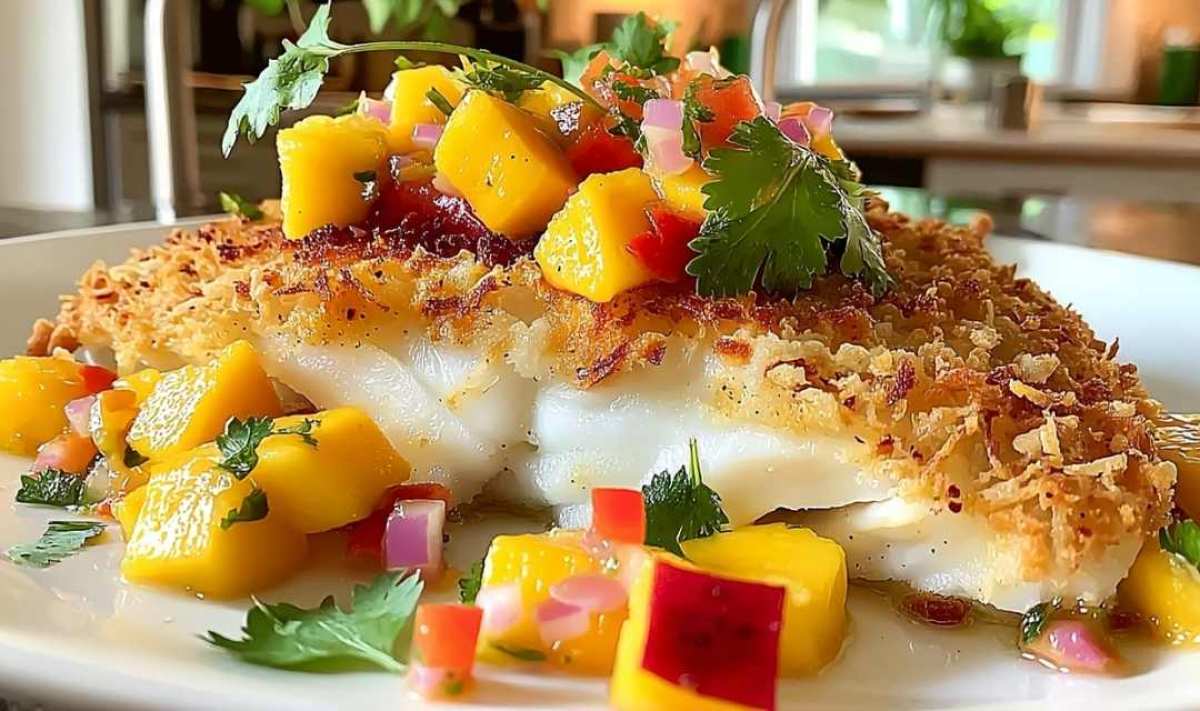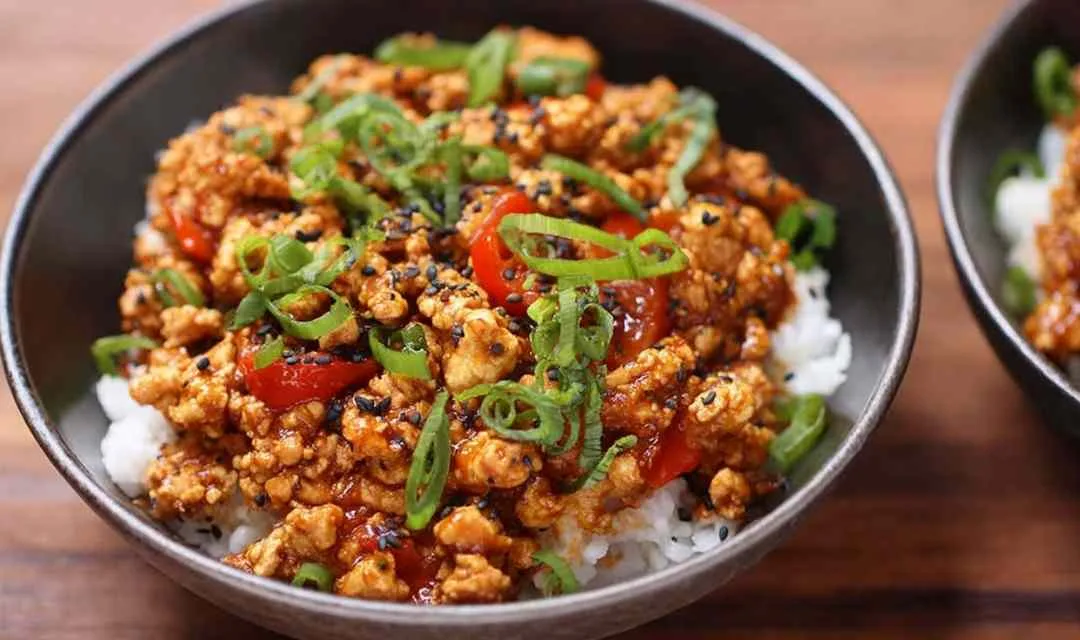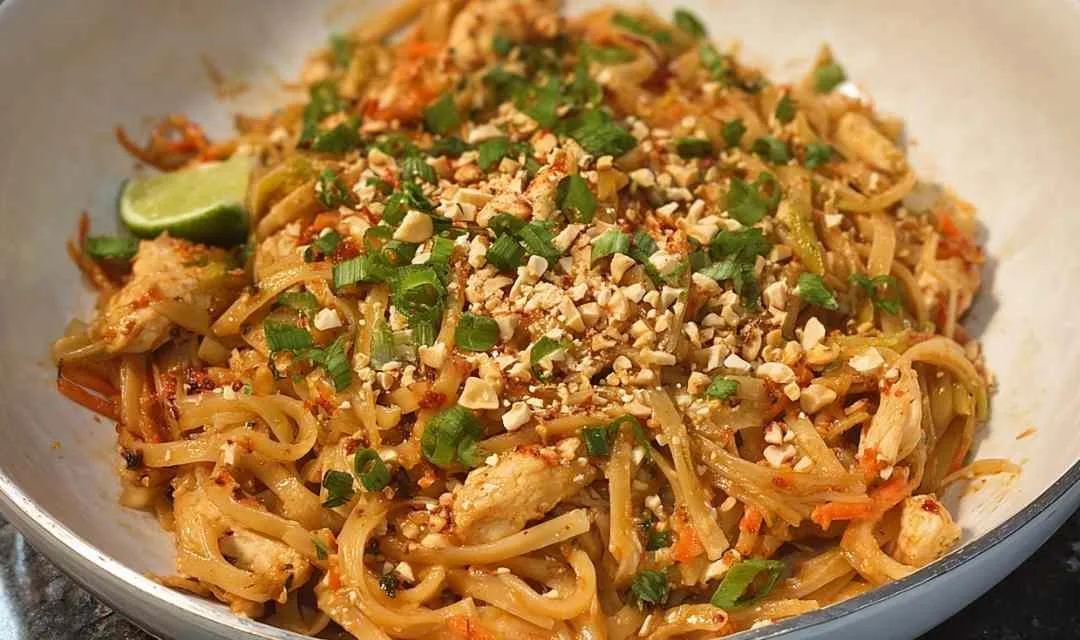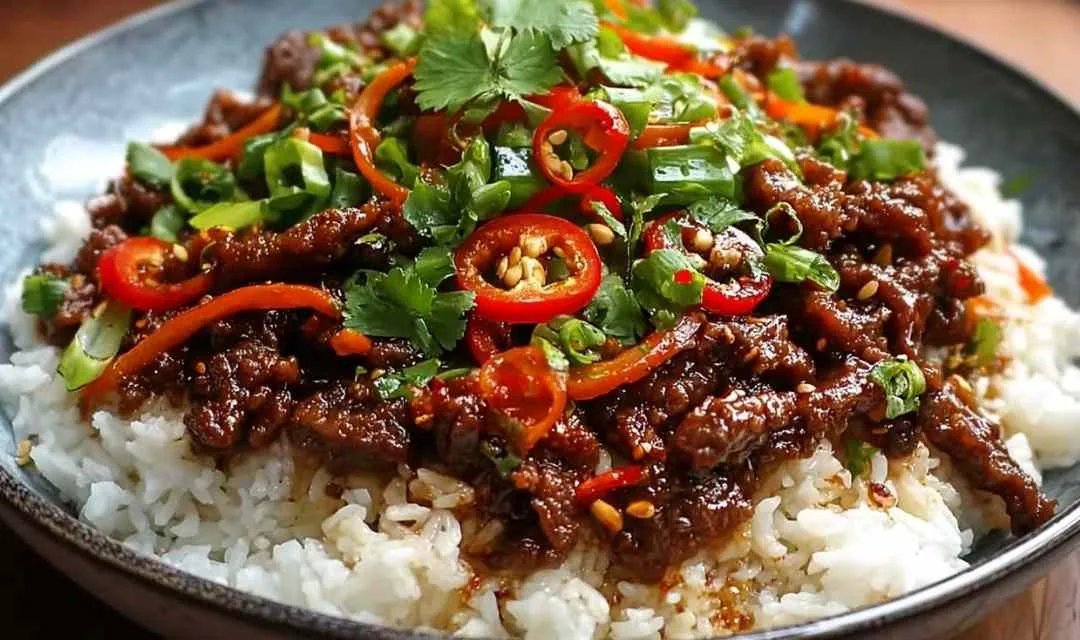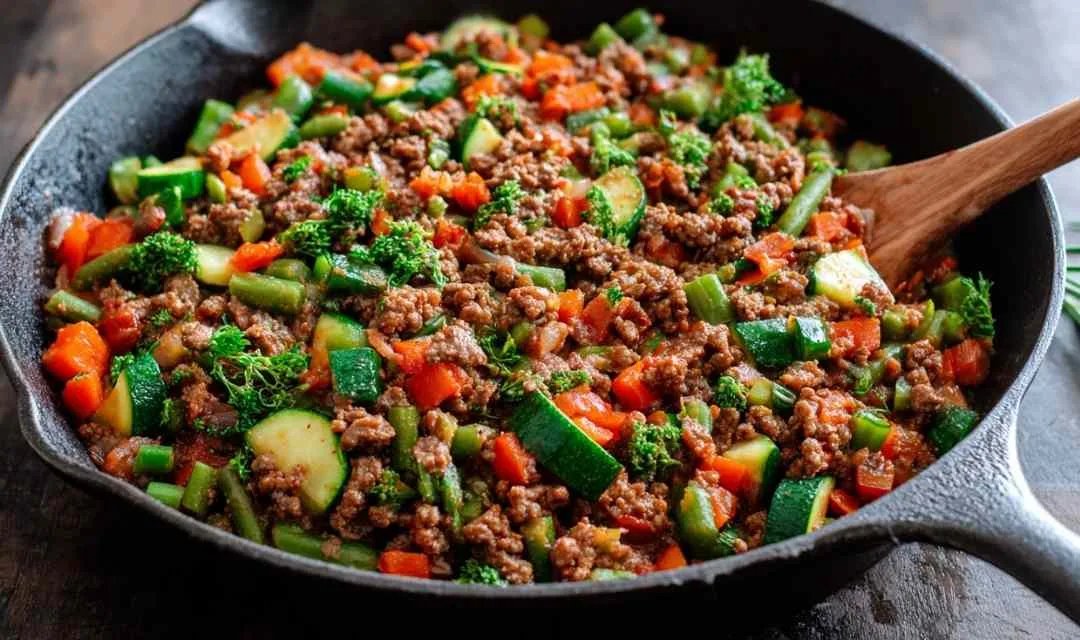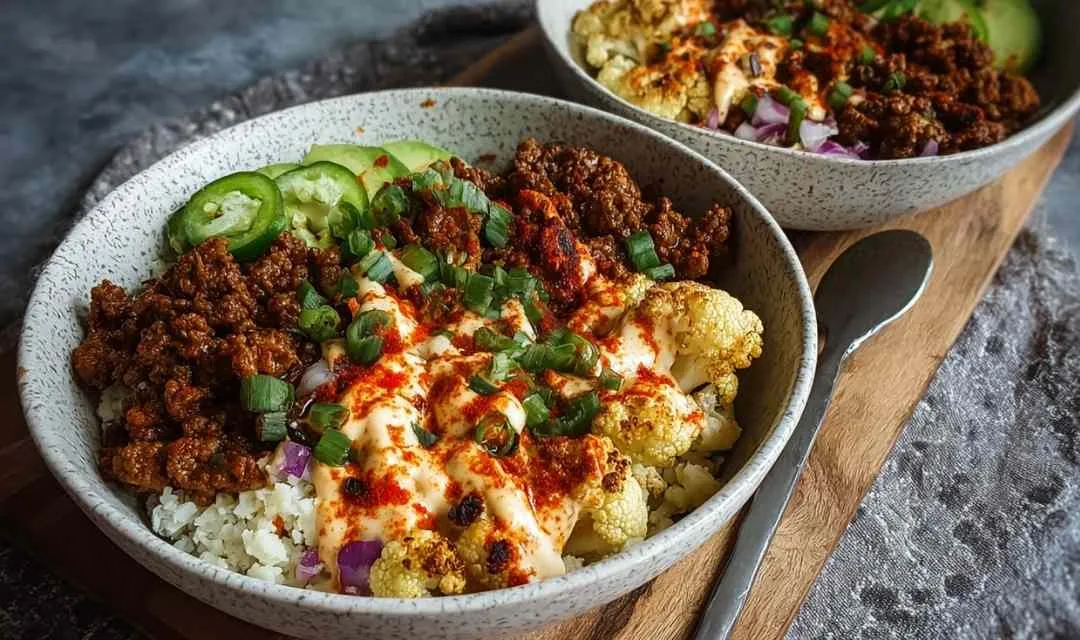Coconut Crusted Fish with Mango Salsa transforms ordinary weeknight dinners into a tropical escape right in your own kitchen. This restaurant-quality dish delivers crispy, golden perfection with every bite, and I’ve discovered the secret to making it foolproof every single time.
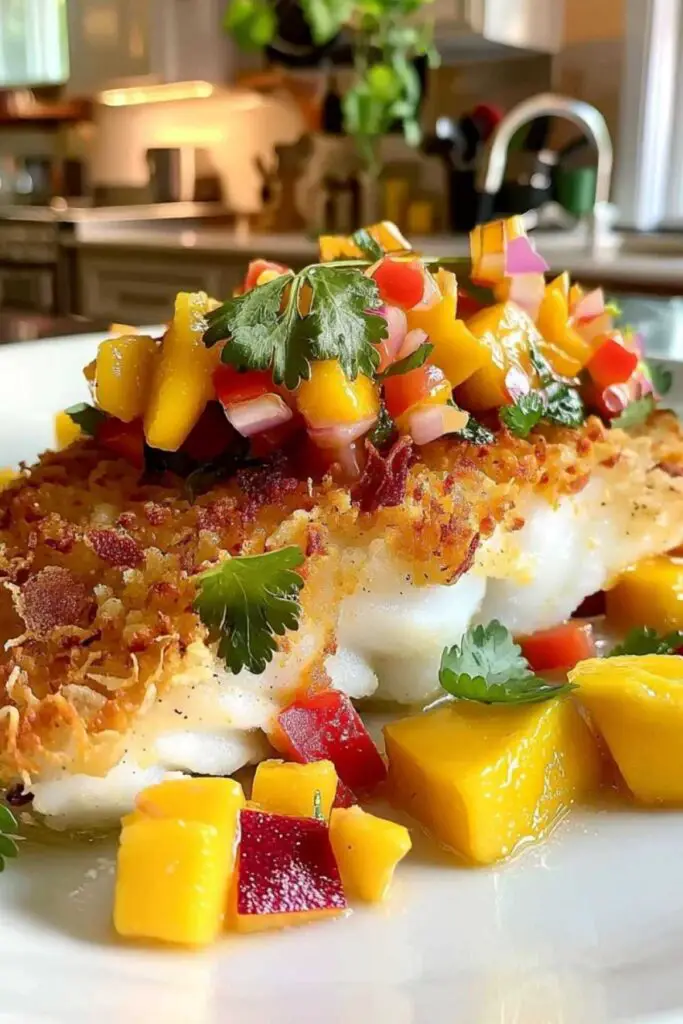
There’s something magical that happens when you combine the satisfying crunch of toasted coconut with the bright, fresh flavors of homemade mango salsa. I first fell in love with this combination during a family vacation to Florida, where a little beachside café served something similar. The moment I tasted it, I knew I had to recreate this tropical treasure at home. After years of perfecting the technique, I can honestly say this version rivals any restaurant dish. The best part? It takes just 30 minutes from start to finish, making it perfect for both busy weeknights and special occasions when you want to impress. Let’s get cooking!
Why You’ll Love This Coconut Crusted Fish with Mango Salsa
This tropical-inspired dish has become one of my most requested recipes, and it’s easy to understand why. The combination of textures and flavors creates something truly special that brings a taste of vacation to your dinner table.
- Incredibly quick and simple – Ready in just 30 minutes with minimal prep work
- Healthy baked preparation – No deep frying needed for that perfect golden crust
- Stunning visual appeal – The vibrant colors make every plate look restaurant-worthy
- Versatile serving options – Works beautifully as a main course or elegant appetizer
- Foolproof technique – Even beginning cooks can achieve professional results
- Fresh, tropical flavors – Every bite delivers a burst of sunshine and warmth
This Coconut Crusted Fish with Mango Salsa is more than just dinner—it’s a mini vacation on a plate that brings my family together around the table every time.
Ingredient Note List
White Fish Fillets: I always recommend using firm white fish like cod or tilapia because they hold up beautifully to the coconut coating without falling apart during baking.
Unsweetened Shredded Coconut: This creates the signature tropical flavor and crispy texture that makes this dish so special—sweetened coconut would burn too quickly in the oven.
Panko Breadcrumbs: These Japanese-style breadcrumbs add extra crunch and help the coconut coating stay perfectly crispy throughout the baking process.
Fresh Eggs: The egg wash acts as the binding agent that helps our coconut mixture stick firmly to each fish fillet for an even, golden coating.
Ripe Mango: Make sure to choose a mango that yields slightly to gentle pressure—it should be sweet and juicy but still firm enough to dice cleanly.
Fresh Lime Juice: This brightens the entire dish and balances the richness of the coconut coating with its zesty, tropical acidity.
Red Onion: The mild bite of red onion adds a subtle sharpness that complements the sweet mango without overpowering the delicate fish.
Fresh Cilantro: This herb brings a fresh, citrusy note that ties all the tropical flavors together beautifully in the mango salsa.
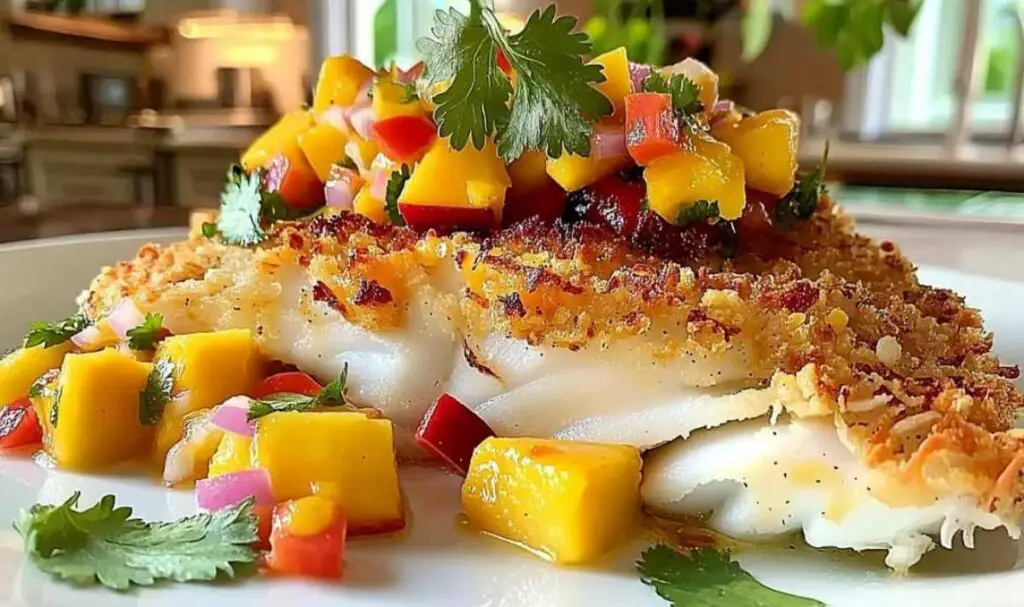
How to Cook Coconut Crusted Fish with Mango Salsa
Step 1. I always start by preheating my oven to 400°F and lining a baking sheet with parchment paper—this prevents sticking and makes cleanup so much easier.
Step 2. In a medium bowl, I mix the shredded coconut and panko breadcrumbs with a pinch of salt and pepper, creating the perfect coating mixture for our fish.
Step 3. My grandmother always told me to beat eggs in a shallow bowl rather than a deep one—it makes dipping the fish fillets much easier and more even.
Step 4. I’ve found that patting the fish completely dry before dipping ensures the egg wash adheres properly and creates a better coating base.
Step 5. When dipping each fillet in the beaten eggs, I let the excess drip off for a few seconds—too much egg can make the coating soggy.
Step 6. Here’s my secret: I press the coconut mixture firmly onto each side of the fish and gently shake off any loose pieces for the most even, crispy coating.
Step 7. I usually bake the coated fillets for 12-15 minutes, checking at the 12-minute mark—the fish should flake easily with a fork and the coating should be golden brown.
Step 8. While the fish bakes, I prepare the mango salsa by combining all the fresh ingredients in a bowl, tossing them gently to preserve the mango’s texture.
Step 9. My family prefers when I let the salsa sit for about 5 minutes before serving—this allows the flavors to meld together beautifully.
Step 10. I always serve this dish immediately while the coconut coating is still crispy, topped with the fresh mango salsa and a few lime wedges on the side.
How to Store & Reheat
I usually store any leftover Coconut Crusted Fish with Mango Salsa in separate airtight containers in the refrigerator, where the fish stays fresh for up to 2 days. The key is keeping the fish and salsa separate to maintain the best texture and prevent the coating from getting soggy—especially if you’re planning to pair it later with something cozy like Banana Bread for dessert.
For the mango salsa, I’ve learned it’s best enjoyed fresh, but it will keep in the fridge for up to 2 days in a covered container. The flavors actually develop nicely overnight, though the texture softens slightly.
When it comes to reheating, I recommend using the oven at 350°F for about 8-10 minutes to restore that crispy coconut coating—the microwave will make it soggy. If you’re in a hurry, place the fish on a wire rack in the toaster oven for the best results. I don’t recommend freezing this dish since the coconut coating and fresh salsa are best enjoyed at their peak texture.
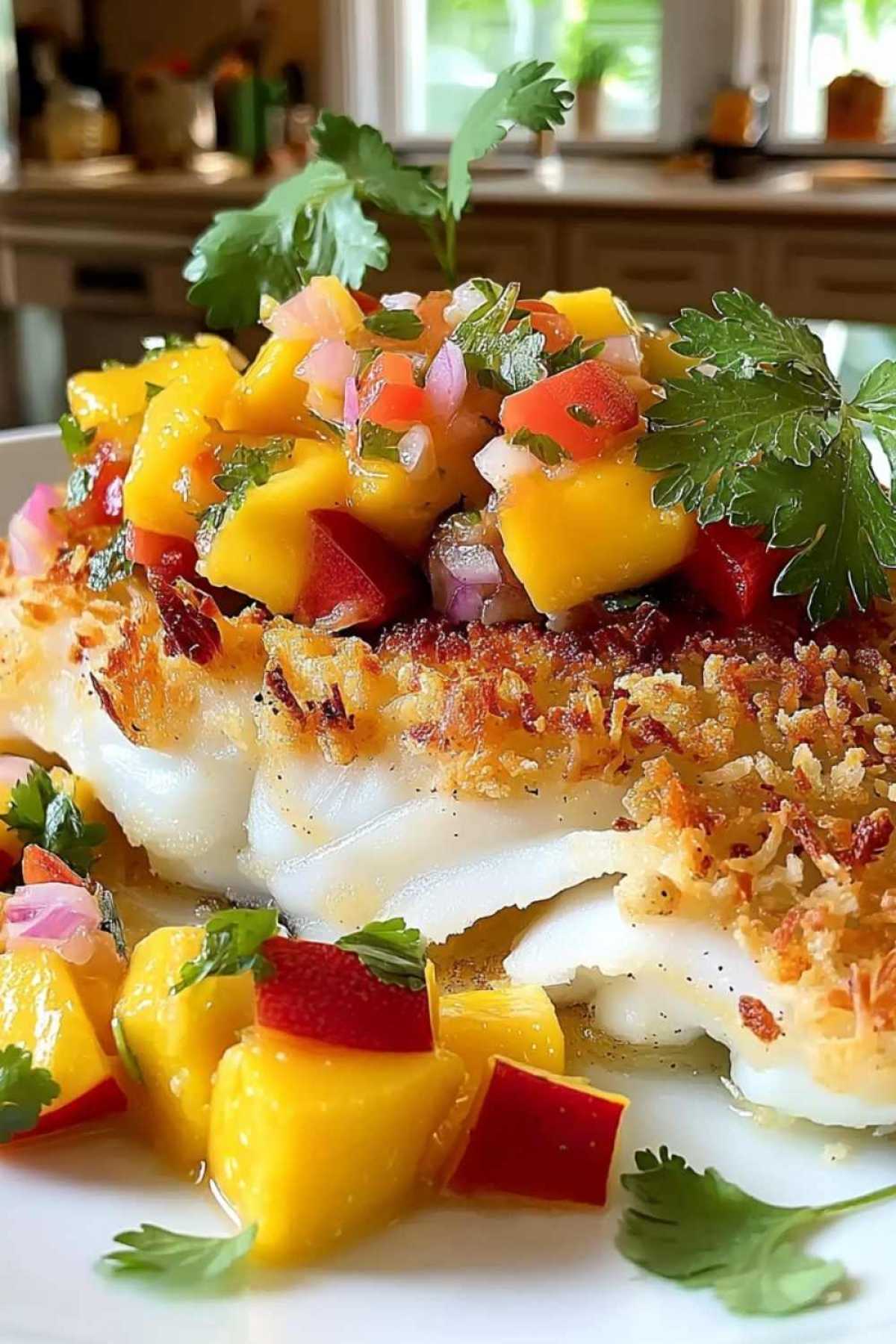
Coconut Crusted Fish with Mango Salsa
Ingredients
Equipment
Method
- Preheat oven to 400°F (200°C). Line a baking sheet with parchment paper.
- In a bowl, mix shredded coconut and panko breadcrumbs with salt and pepper.
- Beat eggs in a shallow bowl.
- Pat fish fillets dry. Dip into eggs, then press into coconut-panko mixture until well coated.
- Place coated fillets on prepared baking sheet.
- Bake for 12–15 minutes, until golden brown and fish flakes easily.
- Meanwhile, combine mango, red onion, cilantro, lime juice, salt, and pepper in a bowl. Toss gently.
- Serve baked fish hot with mango salsa. Garnish with lime wedges if desired.
Notes
What to Serve with Coconut Crusted Fish with Mango Salsa
Coconut Rice: The subtle coconut flavor in jasmine rice cooked with coconut milk creates a perfect tropical harmony with our fish while providing a satisfying, creamy base.
Simple Green Salad: or a Fresh Garden Salad: A crisp salad with vinaigrette adds freshness and balances the richness of the coconut coating beautifully.
Roasted Asparagus: The slight char and tender texture of roasted asparagus provides a lovely contrast to the crispy fish while adding vibrant color to your plate.
Quinoa Pilaf: This protein-packed grain makes the meal more filling while its nutty flavor complements the tropical elements without competing for attention.
Steamed Broccoli: In my kitchen, I often serve simple steamed broccoli with a squeeze of lemon—it adds nutrition and a pop of green color that makes the whole plate more appealing.
Garlic Mashed Cauliflower or Cheesy Au Gratin Potatoes: Both options provide a creamy, comforting base that lets the tropical flavors of the fish and salsa truly shine.
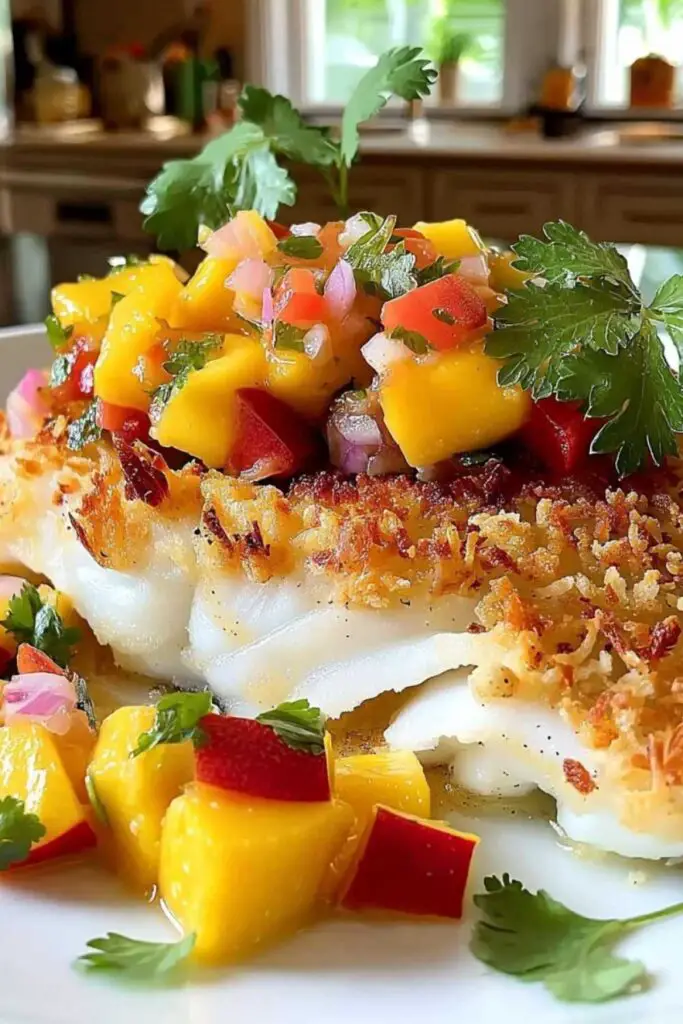
FAQs
How many calories are in Coconut Crusted Fish with Mango Salsa?
Each serving contains approximately 320 calories, making it a relatively light yet satisfying main course that fits well into most healthy eating plans.
Is Coconut Crusted Fish with Mango Salsa healthy for you?
Absolutely! This dish provides 22 grams of high-quality protein, healthy fats from coconut, and vitamin C from the fresh mango salsa—it’s a nutritious choice that doesn’t sacrifice flavor.
Can I use frozen fish fillets for this recipe?
I recommend thawing frozen fish completely and patting it very dry before coating—excess moisture can prevent the coconut mixture from adhering properly and result in a less crispy coating.
What’s the best way to tell when the coconut coating is done?
The coating should be golden brown and the fish should flake easily when tested with a fork—if the coconut starts browning too quickly, tent it with foil and continue baking until the fish is cooked through.
